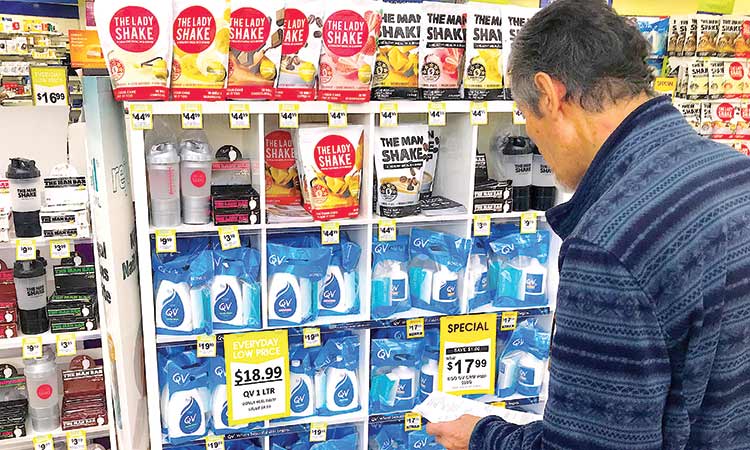Australian inflation slows sharply, case builds for early rate cut

A customer looks at products marked with discounted prices on display at a shopping mall in central Sydney, Australia. Reuters
Just this month, the Reserve Bank of Australia (RBA) said that if inflation failed to accelerate as desired and unemployment were to suddenly trend higher, then rates would need to be cut from an already record low of 1.5 per cent.
“The data are all very weak and suggest a clear deceleration in inflation in early 2019 in a very disinflationary backdrop,” said Su-Lin Ong, head of Australian fixed income strategy at RBC Capital Markets.
“Importantly the inflation pulse is moving in the completely wrong direction to what the RBA has been forecasting and it strengthens the case for a rate cut.”
While the labour market has stayed firm so far, inflation is not cooperating at all. The headline consumer price index (CPI) was flat in the March quarter, below forecasts for a 0.2 per cent increase and the lowest since a negative reading in early 2016.
The annual CPI inflation braked to 1.3 per cent in the March quarter, from 1.8 per cent in the previous quarter, and was the lowest since the September quarter of 2016.
Key measures of underlying inflation favoured by the RBA averaged around 1.4 per cent for the year, marking 13 quarters below the central bank’s target range of two or three 3 per cent. The last time inflation was this tepid in 2016, the RBA responded with two rate cuts - one in May and one in August.
Investors reacted by knocking the local dollar down almost 1 per cent to $0.7037, the lowest since March 11. Interest rate futures sharply narrowed the odds on an easing, perhaps even as early as the RBA’s next policy meeting on May 7.
Yields on three-year bonds dived 14 basis points to an all-time low of 1.27 per cent, while Australia’s main share index surged to its best level in 11 years.
The probability of a May cut doubled to 44 per cent and a quarter-point move was fully priced for July, compared with October earlier this week.
The Australian dollar tumbled to a six-week low on Wednesday as soft domestic inflation reinforced prospects of monetary easing, while the US dollar hovered near a 22-month high against its peers on after strong US housing data further eased concerns towards the world’s biggest economy.
The Aussie was down 0.9 per cent at $0.7040 after brushing $0.7031, its lowest since March 11.
The antipodean currency tumbled after data on Wednesday showed Australia’s headline consumer price index (CPI) come in flat in the January-March quarter, below forecasts for an 0.2 per cent increase and the lowest since early 2016.
The Reserve Bank of Australia (RBA) has recently opened the door towards monetary policy easing, and Wednesday’s weak inflation reading increased views that the central bank would cut the key interest rate from an already record low of 1.5 per cent.
“The weak CPI heightens the prospect of RBA cutting rates at its May 7 meeting,” said Ayako Sera, senior market economist at Sumitomo Mitsui Trust.
“Higher commodity prices usually support the Aussie, but rate cut prospects are outweighing such positive factors,” Sera said.
The Aussie is a commodity-linked currency that is also usually sensitive to shifts in risk sentiment.
Crude oil prices rallied to six-month peaks this week, while the S&P 500 and Nasdaq reached record high closings overnight.
The dollar index versus a basket of six major currencies stood at 97.660 after rising to 97.777 overnight, its highest since June 2017.
US data on Tuesday showing sales of new single-family homes jumped to a near 1-1/2-year high in March added to recent positive readings in retail sales and exports.
The euro, which has the largest weighting within the dollar index, was down 0.15 per cent at $1.1212 after shedding 0.25 per cent the previous day.
“The European economy looks particularly weak relative to the US economy and this highlights the euro’s weakness,” said Takuya Kanda, general manager at Gaitame.Com Research.
“The United States is now expected to have experienced firm growth in the first quarter, reinforcing the dollar’s strength relative to the euro.”
US first quarter GDP data on Friday could strengthen the case that while the current period of global expansion is in its late stages, the United States is on a firmer footing compared with other leading economies.
The dollar was steady at 111.885 yen after suffering mild losses overnight, weighed down by a decline in long-term Treasury yields.
Agencies







